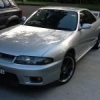R33 Gtr Turbo Upgrade
Announcements
-
Similar Content
-
Latest Posts
-
I see what you mean on that last paragraph and makes sense. I am leaning towards because I made the repair/filler area large that I didn't use a long enough block. Will minimise the area and let you's know how I go. This is random but I noticed when I put epoxy primer it felt flat but that's just temporary.
-
Tried to repair with filler only. The block is a foam block but quite hard and I put a velcro on it for sandpaper, the hook and loop system. It's not one of those super soft ones that just follow the panel. Similar to a dura block.
-
You need one of those automated sprays that puffs a nice small every 15 minutes in their room. Except swap the nice smell for chloroform...
-
Don't step down power supply size, maintain it the whole way. It's how I'd do it. OR, Id have one feed, with one joint that splits out to six smaller gauge wires that go to each coil. I wouldn't add joins like stepping from 12 to 16, at the first two coils, as if you try to continue that fashion, each joint will introduce a voltage drop. In theory, earths should be the same size as power feeds, however in this case the main power needs to be bigger due to the average size current. So the next question is, how much current do these coils actually need?








Recommended Posts
Create an account or sign in to comment
You need to be a member in order to leave a comment
Create an account
Sign up for a new account in our community. It's easy!
Register a new accountSign in
Already have an account? Sign in here.
Sign In Now